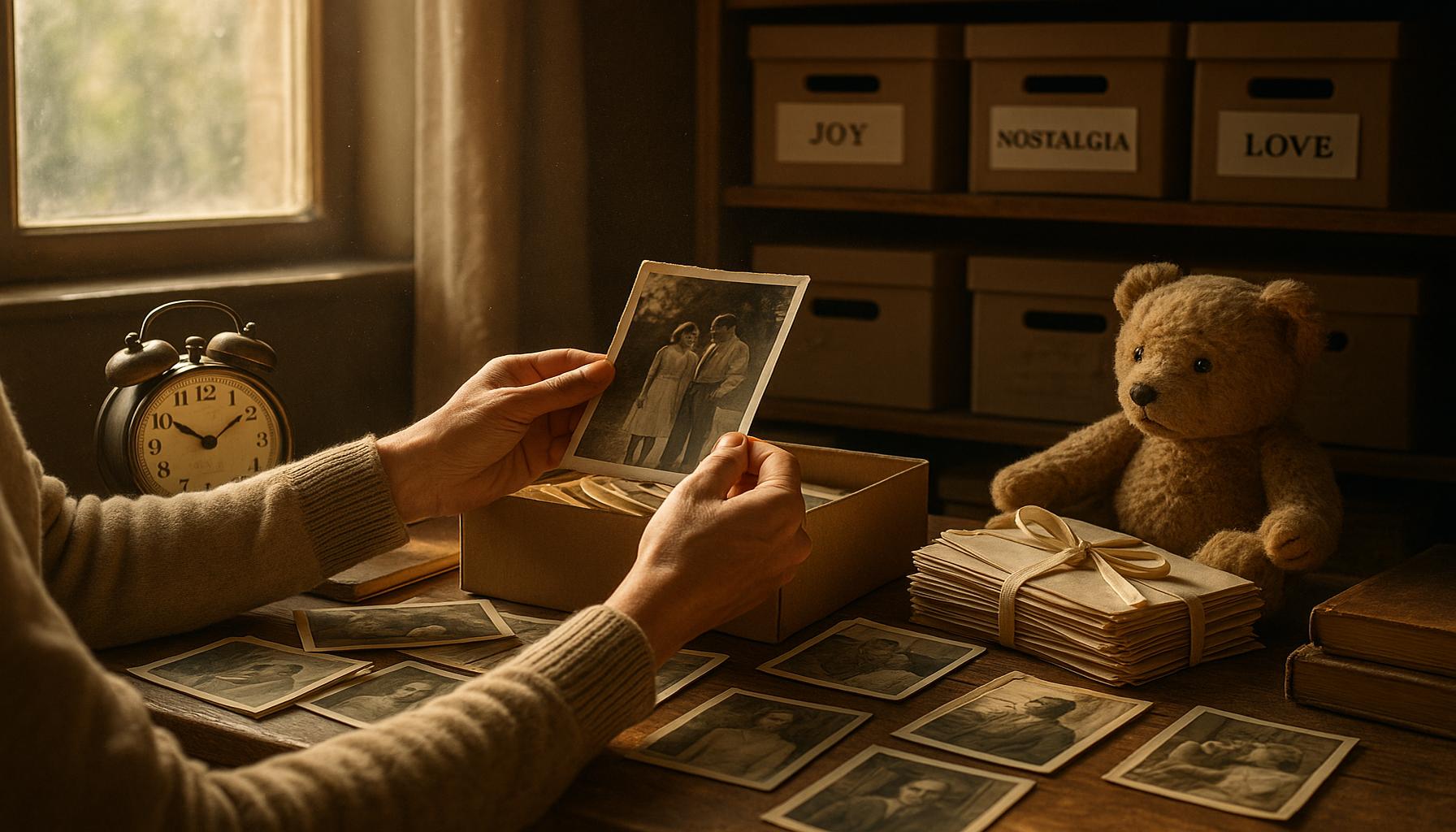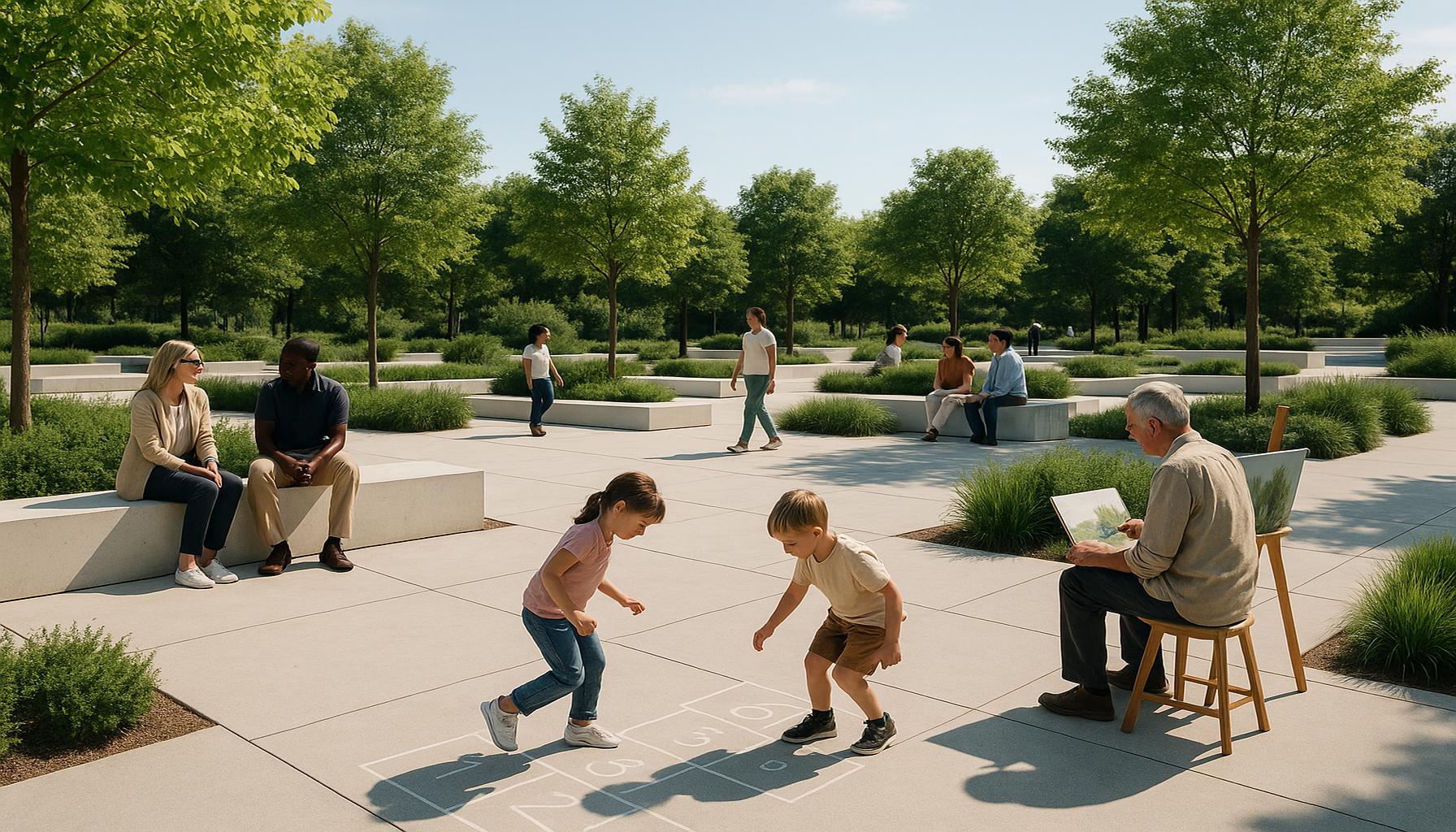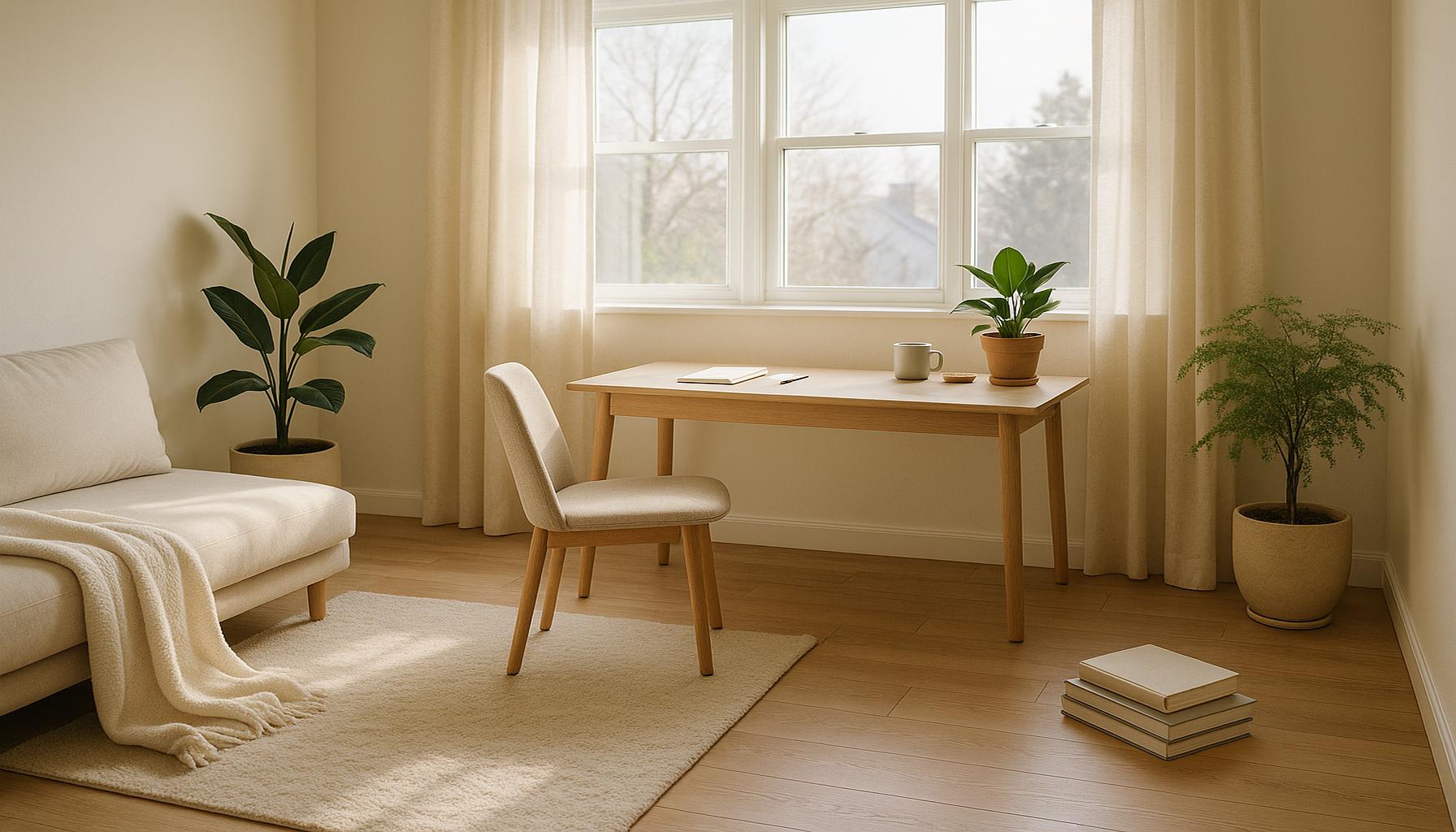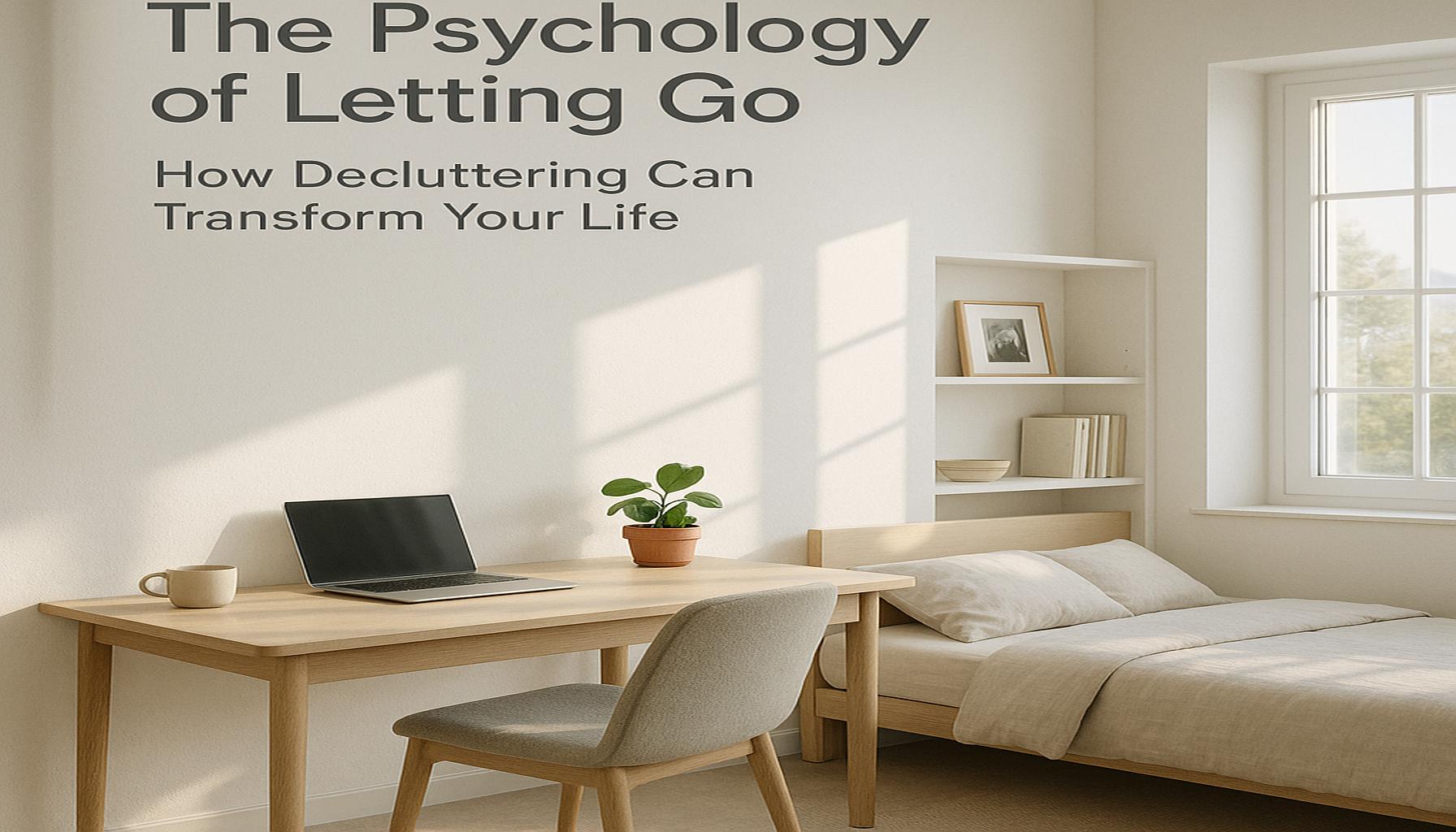Decluttering Memories: The Art of Selecting Objects That Truly Have Emotional Value

Understanding Emotional Value
As we navigate through life, the objects we accumulate can become repositories of our memories, emotions, and experiences. Each item not only represents a moment in time but also a piece of our identity. However, it’s not uncommon to find ourselves surrounded by a plethora of possessions that, over time, may have lost their significance. This realization prompts a crucial question: which objects truly hold emotional value and deserve a cherished place in our lives?
The Nature of Sentimental Objects
Decluttering memories involves a deep introspection, allowing us to discern between items that serve as mere clutter and those that possess deep emotional resonance. Consider the role of photographs. These snapshots capture fleeting moments—birthdays, graduations, family gatherings—that evoke joy and nostalgia. A single photo of a family picnic can ignite a flood of warm memories, reminding us of laughter shared and stories told. Yet, as we sift through boxes of photos, it becomes essential to identify which ones genuinely capture meaningful experiences rather than quantity. Digital photo albums and online platforms have made it easier to store images, yet selecting a few prints to display can turn them into cherished art pieces in our homes.
Moving on to gifts from loved ones, these items often carry emotional weight far beyond their physical attributes. A simple handmade card or a thoughtful book given by a friend may hold the power to transport us back to the moment they were received. This emotional connection can be heightened when the giver has since passed away or when our relationships with them have evolved. Therefore, evaluating the intention behind receiving these gifts plays a vital role in determining their place in our lives.
The Role of Heirlooms
Heirlooms are another category worth emphasizing. These family artifacts often hold a legacy, linking us to our ancestors and preserving our cultural heritage. Items such as a grandmother’s wedding ring or a father’s watch can serve as tangible connections to our family history, reminding us of the stories that shape our identity. They convey a sense of continuity and belonging, showcasing the values and struggles of those who came before us.
The Benefits of Decluttering
However, not all memories must reside in a box or be displayed on our walls. Engaging in the act of decluttering can clarify what truly matters, allowing us to appreciate the significance of intention behind each item we possess. By letting go of unnecessary attachments, we make room for new experiences and relationships, fostering healthier emotional connections to the objects that truly resonate with us.
Ultimately, as we embark on this transformative journey of identifying what holds value in our lives, we not only redefine our physical spaces but also rediscover ourselves. By embracing this process, we can focus on what brings genuine joy and meaning into our lives, cultivating a home environment that reflects our true self.
Join us in exploring the art of selecting objects that speak to our hearts, providing both comfort and significance. Discover how to elevate your living space by surrounding yourself only with items that embody the essence of who you are and the beautiful tapestry of memories you cherish.
DISCOVER MORE: Click here to simplify your mind
Identifying Meaningful Connections
When engaging in the practice of decluttering, the challenge lies not only in physical space management but also in identifying meaningful connections between ourselves and the artifacts we’ve accumulated over the years. The journey begins with asking poignant questions about each object: What do I feel when I see this item?, What memories does it evoke?, and How does it represent my journey?
Creating Distinction: Set Aside vs. Let Go
The process of decluttering memories starts with creating a distinction between items we wish to set aside and those we must let go. Each decision can be guided by the concept of joyful resonance. Items that elicit vivid emotional responses—laughter, nostalgia, or even comfort—are typically markers of crucial experiences in our lives. To streamline this process, consider categorizing your possessions into a few key groups:
- Essential Treasures: Items that hold irreplaceable memories, like a child’s first drawing, a travel memento from a life-changing trip, or wedding memorabilia.
- Functional Sentiment: Objects that may not have immense sentimental value but serve a purposeful role in your daily routines, such as a well-loved cookbook or a favorite chair.
- Forgotten Fleeting Items: Items that no longer evoke strong feelings or relevance, perhaps gifts received out of obligation or objects acquired during fleeting phases of life, such as old gadgets or decorative items.
By segmenting your possessions into these categories, you can begin the thoughtful process of determining what genuinely deserves a place in your life.
The Emotional Weight of ‘What Ifs’
It’s essential to be mindful of the emotional weight associated with ‘what ifs’—the fears tied to letting go. Concerns about regret or losing a piece of one’s history can lead to the accumulation of items that may no longer hold value. Instead, addressing these feelings head-on can guide you towards a healthier relationship with your belongings. Ask yourself if holding onto these items truly adds value to your life or if it simply perpetuates a cycle of sentimentality that hinders your growth.
In embracing this introspective process, the act of decluttering becomes an opportunity for personal growth and self-discovery. Rediscovering the intentionality behind the objects we choose to keep can energize our living spaces and, by extension, our emotional well-being. This journey towards identifying emotional value involves acknowledging not just what we own, but who we are and how we have evolved.
As you embark on this transformative journey of self-reflection, consider how the objects you surround yourself with can reflect not only treasured memories but also aspirations for the future, allowing you to cultivate a home filled with items that inspire and uplift.
| Category | Key Features |
|---|---|
| Emotional Attachment | Objects that evoke joyful memories or significant milestones. |
| Mindful Selection | A thoughtful process that enhances appreciation for sentimental items. |
| Space Management | Creating a harmonious living space that reflects personal values. |
| Clutter Reduction | Eliminating unnecessary items opens up mental clarity and focus. |
Diving into the world of decluttering involves more than just cleaning out your physical space; it is a profound journey of emotional discovery. The concept of selecting objects that truly hold emotional value speaks to the deep connections we forge with our possessions. When we analyze the emotional attachment we have to certain items, we uncover stories that have shaped our lives. Consider the impact of mindful selection as a transformative technique—it encourages individuals to intentionally choose only those items that bring genuine joy or represent pivotal moments. This practice helps cultivate a deeper understanding of what truly matters, allowing one to appreciate the beauty of sentimentality without being overwhelmed by physical clutter. The process ultimately leads to enhanced space management. By re-evaluating which belongings contribute positively to your living environment, you create a sanctuary that resonates with peace and personal values. This mindful approach to decluttering also serves as a catalyst for clutter reduction, paving the way for not only a neatly organized space but also a sharper mental clarity and focus in everyday life. As you embark on this journey of decluttering memories, keep in mind that the goal is not to erase the past but to cherish it. Each item carefully retained speaks volumes about who you are and the memories you are proud to hold dear.
DIVE DEEPER: Click here to enhance your focus
Embracing the Journey: Mindful Techniques for Memory Decluttering
As we delve deeper into the art of decluttering memories, employing mindful techniques can further enhance the process of selecting objects with true emotional value. Mindfulness in decluttering encourages a deeper connection to our belongings by promoting presence and intentionality. One powerful method is the ‘one in, one out’ rule: for every new item you bring into your space, consider letting go of something that no longer aligns with your journey. This technique not only mitigates clutter but also cultivates a habit of conscious decision-making.
Journaling Your Journey
Another effective approach is maintaining a decluttering journal. This can provide an outlet to articulate the emotional stories behind certain items, facilitating a clearer understanding of their significance. Each entry can capture feelings associated with a possession and the narrative that accompanies it. For instance, recording the story behind an old concert ticket might evoke memories of friends, laughter, and youth, encouraging the owner to evaluate its place in their current life. Over time, revisiting these reflections can reinforce the decision to retain or release belongings, creating a personal archive of cherished moments.
The Impact of Visual Reminders
Complementing the process with visual reminders can effectively represent memorable experiences while reducing physical clutter. Consider creating a memory collage—a picture board featuring photographs, quotes, and snippets of paper that depict significant milestones and relationships. By curating a visual narrative, you transform a physical collection into an emotional landscape, fostering connection without overwhelming your living space with items that may have only fleeting relevance.
Utilizing Technology for Preservation
In an age defined by digital transformation, technology offers innovative solutions for memory preservation. Digitizing photographs, heirloom recipes, or handwritten letters can allow for maintaining treasured memories while alleviating physical clutter. Scanning or photographing items and storing them in a digital format not only saves space but can create a digital archive that serves as a nostalgic reservoir. Apps designed for memory keeping can allow for organization and easy access to keep memories alive without the burden of physical objects.
Engaging Support Systems
Moreover, engaging family and friends in the decluttering process can enrich the experience significantly. Inviting loved ones to reminisce about shared memories associated with particular objects can spark conversations that reveal shared sentimentality and emotional weight. This collaborative effort enhances emotional insight and supports decision-making centered on collective experiences. For example, while sorting through inherited items, family members may discover diverse perspectives on what each object means to them, leading to a more nuanced understanding of their collective history.
In this intricate dance of decluttering memories, it becomes evident that the connections we forge with our possessions extend far beyond mere nostalgia. Through mindful techniques, the journey to identify and select truly meaningful objects not only transforms our living spaces but also allows us to unfold the rich tapestries of our lives, honoring both past experiences and future aspirations. Embracing this process ultimately leads to enriched emotional well-being, fostering an environment of inspiration and joy.
DISCOVER MORE: Click here to learn how minimalism can boost your productivity</p
Conclusion: Crafting a Life of Meaningful Memories
In the pursuit of our cherished memories, the practice of decluttering emerges as a vital and transformative journey. It encourages us to sift through the layers of sentimentality, recognizing that not every item holds lasting emotional value. By embracing mindfulness and employing creative techniques such as journaling, visual reminders, and technological aids, we learn to celebrate the past while streamlining the present. This process is not merely about eliminating clutter, but about curating a collection of memories that resonate deeply with our identities and aspirations.
As we reflect on the objects that truly matter, we uncover stories that define who we are, fostering intentional decision-making that honors our personal journey. Engaging loved ones in this process enriches our experiences, helping us realize the shared emotional landscapes tied to our possessions. It prompts discussions that unravel collective histories and strengthens our bonds.
Ultimately, decluttering memories nurtures a healthier emotional environment, one that invites inspiration and fosters joy. By choosing to let go of what no longer serves us and embracing that which uplifts our spirits, we can create spaces that reflect our true selves. As you embark on your own decluttering adventure, remember that the goal is not simply to remove physical items, but to shape a living space filled with heartfelt meaning. This art of selection not only frees us from the weight of excess but also paves the way for a future enriched by the memories that genuinely matter.


